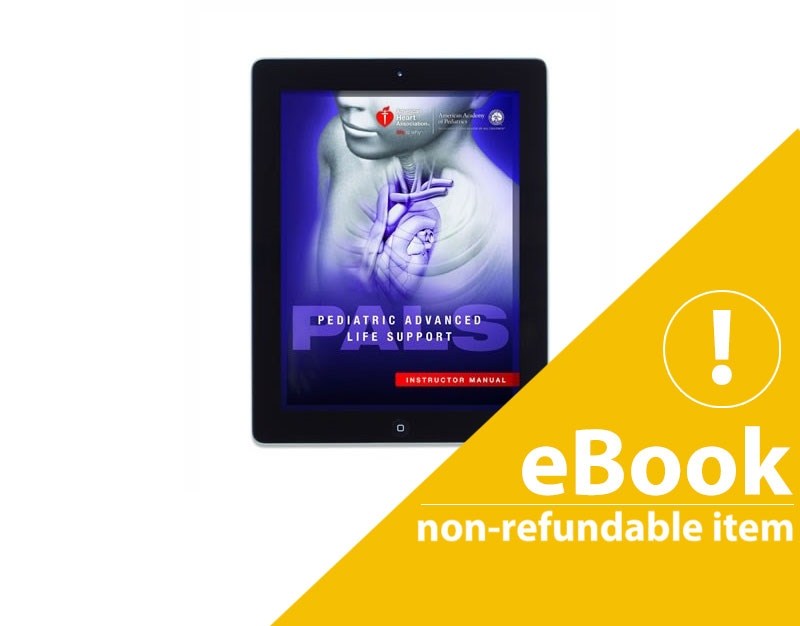Pediatric Advanced Life Support (PALS) Instructors are strongly encouraged to complete the PALS Product and Course Orientation, available on the Instructor Network. The PALS Product and Course Orientation was created to aid Instructors in understanding the new course design and teaching strategies.
The PALS Provider Manual eBook contains all of the information students need to know to successfully complete the PALS Course. The PALS Course has been updated to reflect new science in the 2015 AHA Guidelines Update for CPR and ECC. The PALS Provider Manual is designed for use by a single student as a reference tool pre- and post-course. It is also used as a clinical reference. The PALS course uses a series of videos and simulated pediatric emergencies to reinforce the important concepts of a systematic approach to pediatric assessment, basic life support, PALS treatment algorithms, effective resuscitation and team dynamics. The goal of the PALS Course is to improve the quality of care provided to seriously ill or injured children, resulting in improved outcomes.
Aha Pals Instructor Manual Download Free
Topics covered include:
• The systematic approach to assess and treat a seriously ill or injured infant/child
• Recognition and management of cardiac arrest
• Basic child and infant life support skills
• Effective resuscitation team dynamics
• Recognition and management of respiratory distress and failure, including airway management
• Recognition and management of shock, including vascular access
• Recognition and management of arrhythmias, including electrical therapy
• Post-cardiac arrest care

This manual also gives students access to a website containing additional information and reference materials to help them successfully complete the course.
A separate supplementary tool, the PALS Digital Pocket Reference Card (product #15-3121), is automatically included with the purchase of the PALS Provider Manual eBook. It is the electronic equivalent of the printed PALS Pocket Reference Card Set.
NOTE: Prior to purchasing an AHA eBook for a classroom-based course, students should check with their Instructor or Instructor’s Training Center Coordinator to ensure that mobile devices will be allowed in the classroom.
The PALS Instructor Manual eBook includes essential information and Lesson Plans that PALS Instructors need to teach the PALS Course, PALS Update Course and provide skills practice and testing for HeartCode® PALS. The PALS Course has been updated to reflect new science in the 2015 AHA Guidelines Update for CPR and ECC. The PALS Course uses a series of videos and simulated pediatric emergencies to reinforce the important concepts of a systematic approach to pediatric assessment, basic life support, PALS treatment algorithms, effective resuscitation and team dynamics. The goal of the PALS Course is to improve the quality of care provided to seriously ill or injured children, resulting in improved outcomes.
Upon successful completion of this course, students will be able to:
• Perform high-quality Child CPR AED and Infant CPR per AHA BLS recommendations
• Differentiate between patients who do and do not require immediate intervention
• Recognize cardiopulmonary arrest early and begin CPR within 10 seconds
• Apply team dynamics
• Differentiate between respiratory distress and failure
• Perform early interventions for respiratory distress and failure
• Differentiate between compensated and decompensated (hypotensive) shock
• Perform early interventions for the treatment of shock
• Differentiate between unstable and stable patients with arrhythmias
• Describe clinical characteristics of instability in patients with arrhythmias
• Implement post–cardiac arrest management
Pals Instructor Manual Download 2017
Please note: Because this book is electronic, there are no separate supplementary tools included. All supplementary tools included with the printed version (e.g., Instructor Manual CD) are accessible electronically through the AHA Instructor Network (www.ahainstructornetwork.org).
Comments are closed.